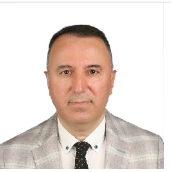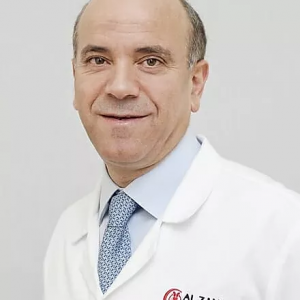Carcinoid Tumor
What are Carcinoid tumors? Carcinoid tumors occur when tumors grow in neuroendocrine cells. These cells are hormone-producing cells. These tumors are mostly cancerous and spread out to several parts of the body, especially the liver. They are a type of neuroendocrine tumors (NETs) The tumors progress in very slow motion, and hence the patient cannot notice […] Read More
Top Doctors For Carcinoid Tumor Treatments
Top Hospitals For Carcinoid Tumor Treatments
Carcinoid Tumor
What are Carcinoid tumors?
Carcinoid tumors occur when tumors grow in neuroendocrine cells. These cells are hormone-producing cells. These tumors are mostly cancerous and spread out to several parts of the body, especially the liver. They are a type of neuroendocrine tumors (NETs) The tumors progress in very slow motion, and hence the patient cannot notice any signs or symptoms until in the late stages of the disease. Some carcinoid tumors can start functioning, meaning they can begin secreting the hormones. When carcinoid tumors begin to spread and release hormones, causing symptoms, it is called “carcinoid syndrome. “ Neuroendocrine carcinoid tumors happen mostly in the lungs or gastrointestinal (GI) tract, comprising the stomach, small intestine, large intestine (colon), rectum, and appendix. It can start in the liver, pancreas, testicles for a male, and ovaries for a female in uncommon cases. Picture Courtesy: Healthjade
Picture Courtesy: Healthjade
What are the most common risk factors associated with Carcinoid tumors?
Risk Factors Family history of:-
-
- Carcinoid tumor
- Cancer of the endocrine system, brain, liver, breast, and bladder.
- Multiple Endocrine Neoplasia Type 1 (MEN1)
- Non-Hodgkin Lymphoma
-
-
- Conditions like tuberous sclerosis, neurofibromatosis, etc.
- Age; people from the age of 50 have a higher tendency to develop these tumors.
- Gender; females are more likely to develop carcinoid tumors than males.
How are Carcinoid tumors diagnosed?
Diagnosis Symptoms from the presence of tumors are not likely to show until the tumors have progressed and have become big enough to cause problems, which can take years. Sometimes, the patient may find out that they have carcinoid tumors incidentally when other surgeries related to the GI tract are performed. Symptoms come early when carcinoid tumors are functional, leading to carcinoid syndrome. But the symptoms can be confused with other neuroendocrine tumors, such as adrenal tumors. However, the adrenal tumors release hormones like adrenaline, dopamine, aldosterone, cortisol, etc., and carcinoid tumors secrete serotonin and chromogranin A. Upon consultation, the doctor may recommend the following tests or procedures to diagnose carcinoid tumors.-
- Blood Test; to check the increased level of hormones like serotonin and chromogranin.
- Urine Test; to examine high levels of hormones, check for serotonin waste product – 5-hydroxy indole acetic acid (5-HIAA).
- Imaging Tests, such as scans (CT and MRI), and X-rays, are used to find and locate the presence of carcinoid tumors.
- Radionuclide Scan (OctreoScan); to inspect for carcinoid tumors by injecting a radioactive substance that will attach to only carcinoid tumors.
- Biopsy; to examine a small sample of cells for the trace of tumors or high levels of hormones.
- Endoscopic Tests; examination through a small camera inserted or taken into the body to check for tumors.
-
-
- Colonoscopy, to view the colon and rectum
- Upper endoscopy to view the esophagus, abdomen, and small intestine.
- Capsule endoscopy is a pill with a small camera that is swallowed to view the small intestine.
-
How are Carcinoid tumors treated?
Treating carcinoid tumors depends on the location and how much it has spread, and the areas to which it has spread. The tumors commonly metastasize to the liver. Treatments include:Medications
Drugs can be given as pills or injections and can be targeted, hormones, immune therapies, or drugs to fight the symptoms.-
-
- Hormone Therapy
-
-
-
- Chemotherapy
-
-
-
- Immunotherapy
-
-
-
- Peptide Receptor Radionuclide Therapy (PRRT)
-
-
-
- Targeted Therapy
-
Heat or Cold Treatments
-
-
- Radiofrequency ablation delivers intense heat to cancer cells to kill them, such as fulguration.
- Cryoablation, freezing, and thawing are delivered in cycles to cancer cells to make them die.
-
Radiation Therapy
Radiation therapy is used to provide high-frequency radiation rays that will kill cancer cells and shrink tumors.Surgery
Surgical procedures are used to remove cancerous tumors from affected areas or to remove sections of areas where tumors appear in mass–resection. However, tumors are removed when diagnosed early and have not spread to other body areas. If it has begun spreading, surgery can be done to reduce the effect as much as possible. Whatever is left has to be treated by other treatment methods.Liver Treatments
Carcinoid tumors metastasize mainly to the liver, and because of this, treatments to stop or control tumors in the liver from causing more damage have become necessary. Where a liver surgery or resection to extract tumors is not possible, other treatments include:-
- Hepatic artery embolization blocks the blood supply to tumors to stop the growth and spread.
- Chemo embolization; chemo drugs are injected into the patient’s liver through a catheter to stop the growth of the cells and shrink tumors.
- Radioembolization; radioactive beads are injected into the patient’s liver and get stuck on the tumors producing radiation to kill the cancerous cells.
Symptoms
What are the most common symptoms associated with Carcinoid tumors?
In the early stages of carcinoid tumors, the patient most likely won’t have any symptoms, and when they begin to manifest, they are often mild. Carcinoid tumor symptoms depend on the tumor’s location and whether it is a functional tumor, that is, a hormone-secreting tumor leading to carcinoid syndrome.
The most common symptoms are listed below:
In Lungs,
-
-
- Cough, sometimes bloody cough
- Wheezing
- Shortness of breath
- Chest pains
- Fatigue
-
In the GI tract,
-
-
- Abdominal pains
- Struggled to breathe
- Fatigue
- Weight loss
- Diarrhea or constipation
- Rectal bleeding
- Bowel obstruction
- Nausea and vomiting.
-
Symptoms of Carcinoid Syndrome
-
-
- Skin flushes
- Visible pink or purple stretch marks
- Fainting spells
- Diarrhea
- Rapid heart rate
- Shortness of breath and wheezing
- Low blood pressure
- Heart palpitation
-
If not treated early, carcinoid syndrome can lead to heart complications such as heart valve leakage and heart failure.
Causes
What are the causes of Carcinoid tumor?
Carcinoid tumors form when the neuroendocrine cells begin to mutate, grow, and divide abnormally. However, there is no known cause for the mutation of these cells that forms the tumor. But there are risk factors that may contribute to the development.
FAQ
-
-
- What is the survival rate for carcinoid tumors?
-
The prognosis for the survival rate of carcinoid tumors is estimated at 70 to 95% for 5 years and 75 to 90% for 10 years.
-
-
- Are carcinoid tumors benign or malignant?
-
Carcinoid tumors can be benign (non-cancerous) or malignant (cancerous). But in most cases, they are malignant, except that they grow in slow motion and may take years before they begin spreading out to other parts of the body.
-
-
- Do carcinoid tumors cause pain?
-
Carcinoid tumors do not cause any pain in the early stages because they are small. However, when they get bigger and begin to multiply and spread out (which may take years), the pains can begin.
-
-
- How fast does a carcinoid tumor grow?
-
When a carcinoid tumor starts, it is microscopic and then begins to grow very slowly. It can take 3 to 5 years for the tumor to grow up to 2 cm.
-
-
- What is the difference between carcinoid and carcinoma?
-
Both carcinoid tumors and carcinomas are neuroendocrine tumors, affecting the hormone-secreting cells, especially those that secrete chromogranin. But while carcinoid grows slowly and can take years to form and spread out fully, carcinomas are very aggressive, growing rapidly.
-
-
- How common are Carcinoid tumors?
-
Carcinoid tumors are found more commonly in adults compared to children and young adults. Clinical studies suggest that Carcinoid tumors affect 4 in 100,000 adults.

































































































